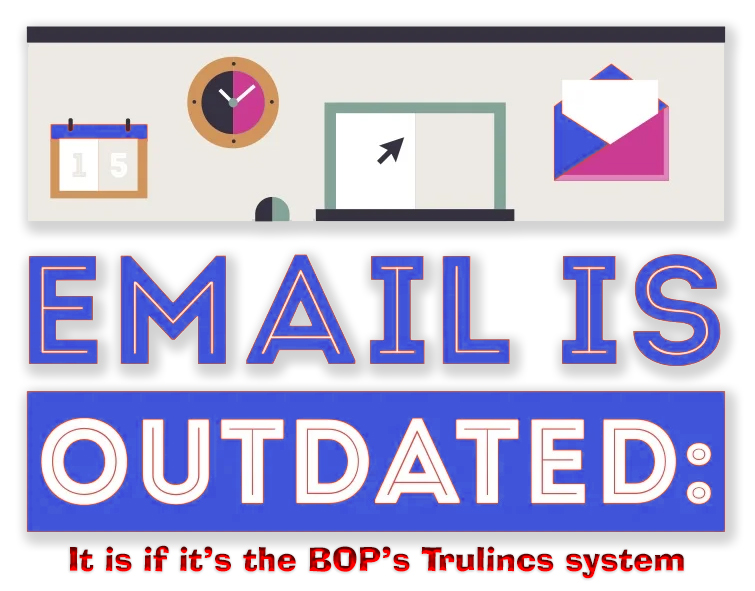We post news and comment on federal criminal justice issues, focused primarily on trial and post-conviction matters, legislative initiatives, and sentencing issues.

SWATTING FLIES WITH AN ELEPHANT GUN
 As everyone knows, the Bureau of Prisons’ Trulincs email system was modified on September 30 to limit outsiders (like the LISA Foundation) from sending emails to groups larger than 10 inmates. Previously, the system let an outside user set up groups of up to 1,000 inmates.
As everyone knows, the Bureau of Prisons’ Trulincs email system was modified on September 30 to limit outsiders (like the LISA Foundation) from sending emails to groups larger than 10 inmates. Previously, the system let an outside user set up groups of up to 1,000 inmates.
Every Sunday night, LISA Foundation would send its newsletter to about 14,000 prisoners. Setting up the email and sending it to 14 separate 1,000-prisoner groups took about a half hour. The system was clunky, but sending the email 14 times was not an enormous inconvenience.
Now, to do the same, LISA would have to send the email about 1,300 times. To do that would take about 68 hours.
Writing in Forbes, Walter Pavlo reported last week that BOP Public Affairs staffer Ben O’Cone told him, “In response to an Office of Inspector General (OIG) audit of the Federal Bureau of Prisons’ (FBOP) Monitoring of Inmate Communications to Prevent Radicalization (March 2020), the OIG recommended that the FBOP establish controls that mitigate the risk of individuals communicating with unknown and un-vetted parties and take steps, including the utilization of available technological features as found in TRULINCS, to reduce the risk of mass emails being receiving by high-risk individuals, including terrorists. As a result, the FBOP’s Executive Team decided to reduce the number of emails that an outside party could send to a group of incarcerated individuals to ten. This measure was taken to comply with the OIG audit.”
O’Cone was referring to OIG findings that “thousands of communications made by terrorists and other high-risk inmates that were only partially monitored… Overall, we identified more than 7,000 emails that had not been monitored at all, and determined through further testing that some of these emails contained content that needed to be evaluated by the BOP and counterterrorism experts.”
The closest the Report came to recommending the type of group email limit the BOP has imposed was to note that “[w]e agree with BOP staff that reasonable limitations are needed in order to effectively monitor general population emails while also satisfying the monitoring requirements for high-risk inmate communications. The limited time staff has to review emails along with other forms of communication, and the inability to obtain official translations for general population emails without prior approval is concerning because some general population inmates may exhibit radical or other high-risk behavior after incarceration.”
 The Inspector General’s study focused on under 600 inmates identified as terrorist-affiliated and examined a 3-year period ending in December 2017. Now, 7-1/2 years after the study period, the BOP has decided that problems with communications involving one out of 250 inmates ought to result in drastically limiting inmate access to mass emails, many of which are from advocacy groups or news reporting services.
The Inspector General’s study focused on under 600 inmates identified as terrorist-affiliated and examined a 3-year period ending in December 2017. Now, 7-1/2 years after the study period, the BOP has decided that problems with communications involving one out of 250 inmates ought to result in drastically limiting inmate access to mass emails, many of which are from advocacy groups or news reporting services.
The fly has been swatted.
Forbes, Bureau of Prisons To Restrict Mass Emails To Prisoners (October 8, 2024)
OIG, Audit of the Federal Bureau of Prisons’ Monitoring of Inmate Communications to Prevent Radicalization (March 25, 2020)
– Thomas L. Root

